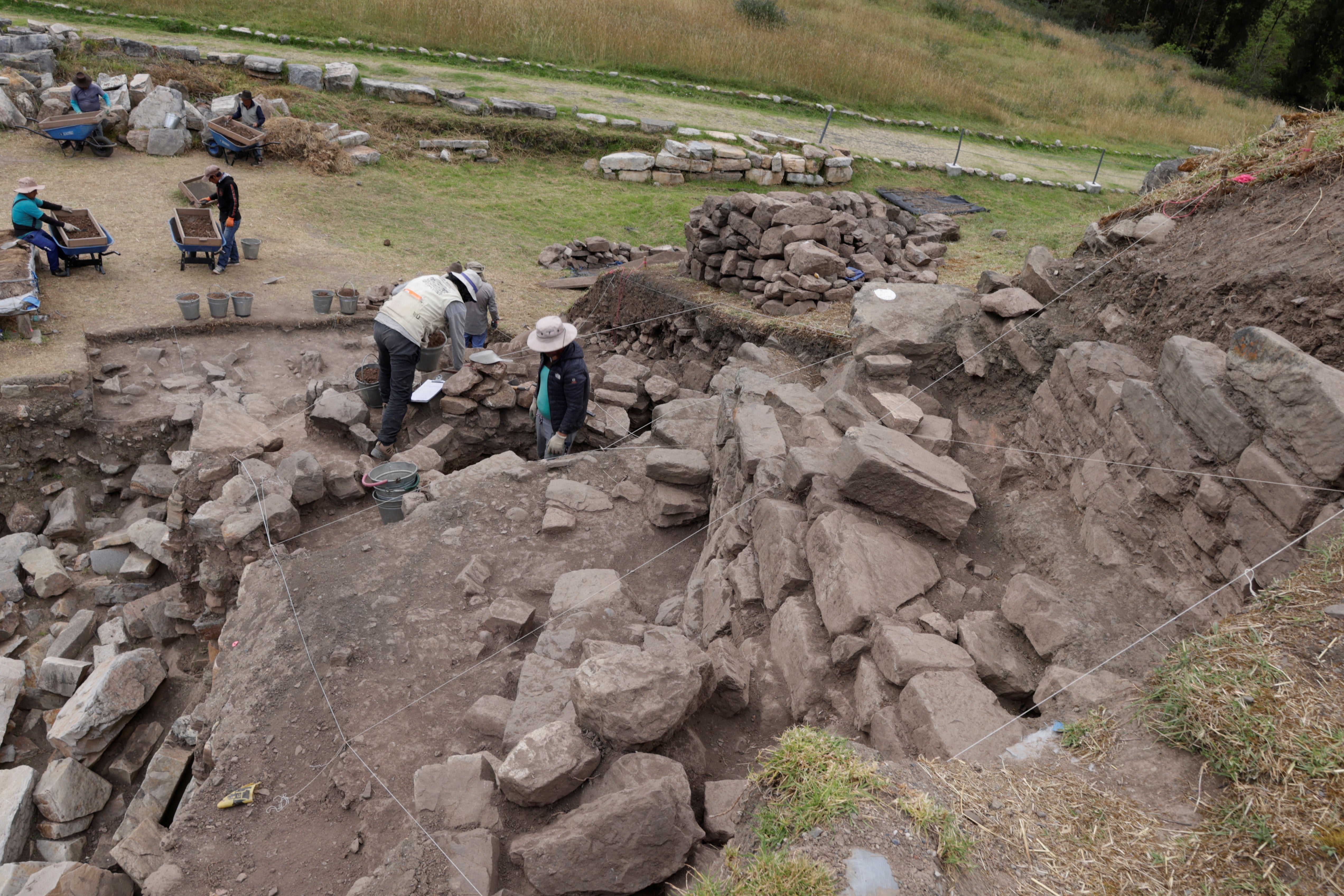Archaeologists discover passageways in 3,000-year-old Peruvian temple
The passageways have features believed to have been built earlier than the temple’s labyrinthine galleries

Your support helps us to tell the story
From reproductive rights to climate change to Big Tech, The Independent is on the ground when the story is developing. Whether it's investigating the financials of Elon Musk's pro-Trump PAC or producing our latest documentary, 'The A Word', which shines a light on the American women fighting for reproductive rights, we know how important it is to parse out the facts from the messaging.
At such a critical moment in US history, we need reporters on the ground. Your donation allows us to keep sending journalists to speak to both sides of the story.
The Independent is trusted by Americans across the entire political spectrum. And unlike many other quality news outlets, we choose not to lock Americans out of our reporting and analysis with paywalls. We believe quality journalism should be available to everyone, paid for by those who can afford it.
Your support makes all the difference.Archaeologists have excavated a network of passageways under a 3,000-year-old temple in the Peruvian Andes.
Chavin de Huantar temple was once a religious and administrative hub for people across the region, Reuters reported.
Found earlier this month, the passageways have features believed to have been built earlier than the temple’s labyrinthine galleries, according to an archaeologist at Stanford University.
John Rick, who was involved in the discovery, said: “It’s a passageway, but it’s very different. It’s a different form of construction. It has features from earlier periods that we’ve never seen in passageways.”
At least 35 underground passageways, which sit 3,200m above sea level, have been found over several years, connecting with each other.
They were built between 1,200 and 200 years BC in the foothills of the Andes.
Chavin de Huantar, declared a World Heritage Site in 1985, was the inspiration and name of the operation carried out when the Peruvian armed forces built a network of tunnels to rescue 72 people taken hostage by the Tupac Amaru Revolutionary Movement (MRTA) rebel group at the Japanese ambassador’s residence in Lima in 1997.
It comes as archaeologists uncovered an “unprecedented” network of lost cities in the Amazon that shed light on how ancient civilisations constructed vast urban landscapes while living alongside nature.
Researchers used lidar technology, dubbed “lasers in the sky”, to scan through the tropical forest canopy, and examine sites found in the savannah forest of southwest Amazonia.
They uncovered a wide range of intricate settlements that have laid hidden under thick tree canopies for centuries in the Llanos de Mojos savannah forest in Bolivia.
The findings, described in the journal Nature on Wednesday, shed light on cities built by the Casarabe communities between AD500 and AD1400.
Heiko Prumers, an archaeologist and study co-author from the German Archaeological Institute, said the complexity of the settlements was “mind-blowing”.
The site features an unprecedented array of elaborate and intricate structures “unlike any previously discovered” in the region, including 5m high terraces covering 22 hectares – the equivalent of 30 football pitches – and 21m tall conical pyramids, say the scientists, including Jose Iriarte from the University of Exeter in the UK.
Researchers examined six areas within a 4,500 sq km region of the Llanos de Mojos, in the Bolivian Amazon, that belonged to the Casarabe culture.
They also found a vast network of reservoirs, causeways, and checkpoints, spanning several kilometres at the site.
Reuters news agency contributed to this report
Join our commenting forum
Join thought-provoking conversations, follow other Independent readers and see their replies
Comments